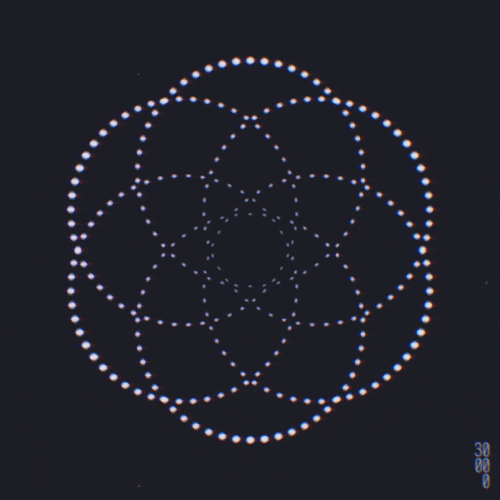
Byzantine art adapted the Hellenistic motifs of decorative art to its semantic and aesthetic context, recomposing them to its own ideals. Byzantium contains an amazing repertoire, remarkable for its conceptual and aesthetic character.
From murals to reliefs, from mosaics to jewelry and from manuscripts to woven fabrics, decoration played an extremely important role in Byzantine art. The high-quality aesthetic character of the decorations that adorn the Byzantine and post-Byzantine frescoes, as well as their semantic value, contribute, radically, to the iconographic ensemble. Thus, the patterns delimit the compositions, fill the space, and emphasize the narrated theme. Also, when incorporated into figures and sacred objects, they highlight the grandeur of secular participation and/or the transcendence of the priesthood.



There are two dominant types in Byzantine decorative art: i. the Hellenistic and ii. the Eastern. The Hellenistic type is more anthropocentric as the motifs support the central theme of figures. This type has a western perception, as it separates the motif from the main scene, giving the impression of depth, which was not the case in Byzantine art. On the other hand, the eastern typology is more abstract, while it takes up more space and, therefore, it is considered more important in the overall artwork.



The scene of the Restoration of the Icons has a special character, as it depicts an event where both the State and the Church had participated. To emphasize this partnership, both icons used a wealth of motifs, enhancing the brilliance of the event.
Ranging from the elaborate red textile, where the icon of Virgin Mary stands, to the rich and complex woven silks and gold-embroidered details in the costumes of the Empress Theodora and the young Michael, a variety of finely decorated shapes are used to show the grandeur of the Empire. On the other hand, the leaders of the ecclesiastical administration, the patriarch, and the bishop, wear impressive liturgical vestments, to show the majesty of the church.
For the red textile, on the base of the icon of Virgin Mary, the painter of the icon of Restoration, used a motif, that was popular in his time, dominated from the 16th century onwards in European decorative art: the flourishing tentacle.
Yet, in the 20th century, a radical approach to the decorative theme of the Restoration of the Icons has emerged. In St. Panteleimon fresco, the painter creates a supreme pairing, where the Hellenistic and the Eastern decorative typology yield a contemporary work of art. His references do not only refer to the icons, but also to manuscripts, mosaics, and, even reflect his early study in abstract painting.
Appropriating this abstract type, the painter highlights the fact that during the century of Iconoclasm, decorative art was the only expression of Byzantine art. With this pattern, Karoussos yielded the entire meaning of the Feast of Orthodoxy.


The semiology of this motif is so rich that it could be a work of art, without any other figurative element, since it contains all the semantic and aesthetic points of the subject. However, Karoussos moved further, by selecting specific features of the Hellenistic typology, so, for the abstract pattern, to govern the scene. Doing so, he remained constant in the Byzantine principles, lacking the depth, creating a one-plane composition, as in a red-figure vase of the Archaic era.





In this composition, the organic relation of Hellenistic and Eastern typology, together with elements of modern art created an excellent condition for the hybrid fresco of St Spyridon chapel to emerge.
The new composition, which has been developed artistically, conceptually, and technologically, aims to transfer this relation into the contemporary context. By this way, it allows art to regenerate its active participation within its intended liturgical purpose.
